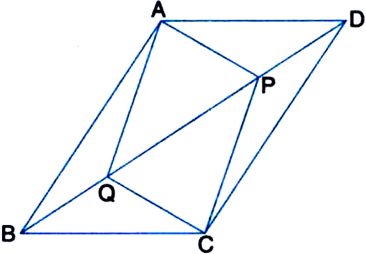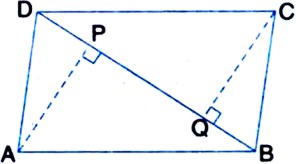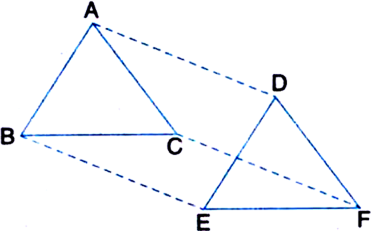If a diagonal of a parallelogram bisects one of the angles of the parallelogram, it also bisects the second angle and then the two diagonals are perpendicular to each other.
Given: ABCD is a ||gm. Diagonal AC bisects ∠A.
To Prove: (i) AC bisects ∠C
(ii) AC ⊥ BD.
Proof: (i) ∵ AB || DC and AC intersects them
∴ ∠1 = ∠4
| Alternate Interior ∠s
Similarly, ∠2 = ∠3
| Alternate Interior ∠s
But ∠1 = ∠2
∴ ∠3 = ∠4
⇒ AC bisects ∠C.
(ii) In ∆ADC,
∠2 = ∠4
∴ AD = CD
| Sides opposite to equal angles of a triangle are equal
In ∆AOD and ∆COD,
OA = OC | ∵ Diagonals
of a ||gm bisect each other
OD = OD | Common side
AD = CD | Proved above
∴ ∆AOD ≅ ∆COD
| SSS Congruence Axiom
∴ ∠AOD = ∠COD | C.P.C.T.
But ∠AOD + ∠COD = 180°
| Linear Pair Axiom
⇒ 2∠AOD = 180°
| ∵ ∠AOD = ∠COD
⇒ ∠AOD = 90°
⇒ AC ⊥ BD.







